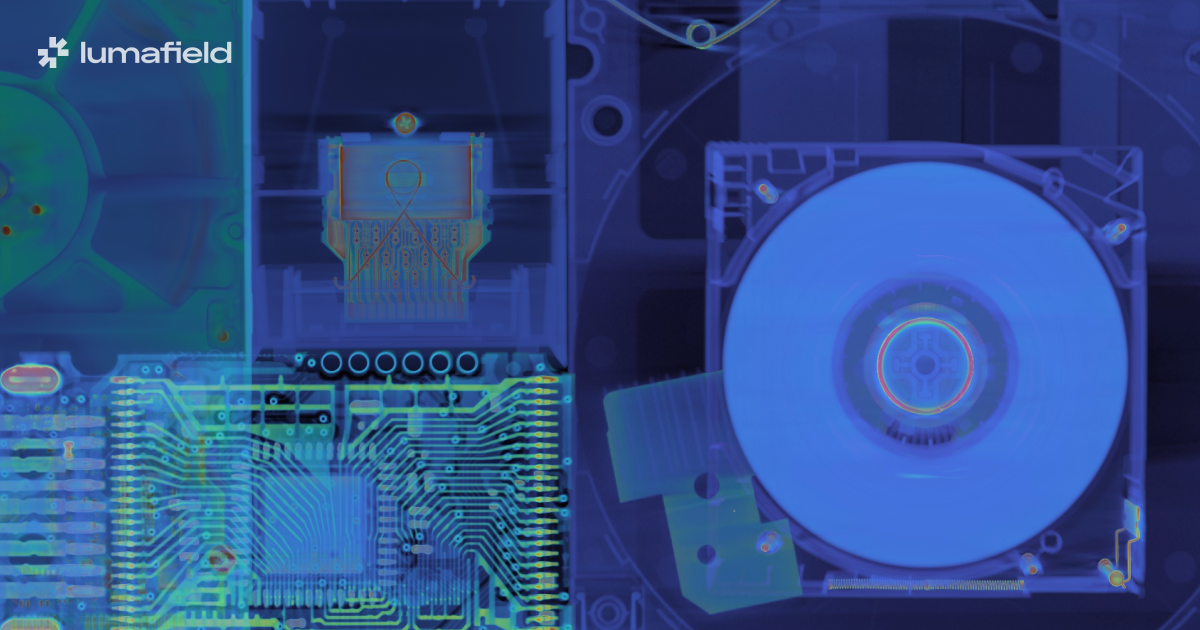RFK Racing and Lumafield
We’re excited to announce that Lumafield has joined forces with RFK Racing, becoming an official partner within the RFK TeK Alliance. With our industrial X-Ray CT inspection platform, engineers at RFK Racing will be well-equipped to achieve unparalleled precision and quality control in the fast-paced world of NASCAR.
Achieving peak performance
Lumafield’s Neptune Industrial X-Ray CT Scanner, coupled with our browser-based Voyager analysis software, offers RFK Racing a transformative toolset for analyzing part quality and detecting potential issues before they affect performance. Industrial CT provides detailed insights into assembly integrity, material consistency, and manufacturing defects that were previously undetectable.
Kevin Kidd, RFK’s Director of Software and Analytics, highlights the significance of this partnership: “Integrating Lumafield’s technology is a game-changer for us. It provides capabilities that allow us to push the boundaries of what’s possible in NASCAR, giving us a critical edge in performance and reliability.”
Generations of NASCAR cars
Over the years, NASCAR has seen several generations of car designs, each bringing new advancements and changes to the sport. The latest update, the Next Gen car, marks a significant shift in how the sport operates. Here’s a brief overview to help you understand where NASCAR currently stands and why quality control has never been more important.
- First Generation (1948-1966)
- Early stock cars were mostly modified versions of production vehicles.
- Minimal safety features and basic technology.
- Second Generation (1967-1980)
- More specialized racing cars with enhanced performance.
- Introduction of purpose-built race cars rather than modified street cars.
- Third Generation (1981-1991)
- Increased focus on aerodynamics and speed.
- More uniform car designs to ensure greater competition.
- Fourth Generation (1992-2006)
- Significant advancements in safety and aerodynamics.
- Introduction of the "Car of Tomorrow" in 2007, focusing on driver safety with improved chassis and features.
- Fifth Generation (2007-2012)
- "Car of Tomorrow" becomes the standard, emphasizing safety and performance balance.
- Sixth Generation (2013-2021)
- Modernization with better aerodynamics and manufacturer-specific body designs.
- Focus on improving race excitement and car aesthetics.
- Next Gen Car (2022-Present)
- Standardized parts level the playing field, while modern features like a modular chassis, independent rear suspension, and 18-inch wheels improve durability, handling, and performance.
- Enhanced safety features protect drivers better, and cost-reducing measures make the sport more accessible and sustainable.

The Next Gen car aims to reduce costs, create fairer competition, modernize the sport, and enhance driver safety. All teams race a standardized car design and buy components from the same vendors. These updates keep NASCAR competitive, sustainable, and attractive to new fans. Consequently, races have become more exciting with tighter finishes, and teams now emphasize precision engineering and strategic innovation within the standardized rules.
With this movement toward standardized designs and supply chains, quality control becomes a key competitive advantage. In this context, Lumafield’s technology is a vital asset for RFK Racing.
Our Neptune CT Scanner and Voyager software enable engineers to conduct thorough internal examinations of components, ensuring compliance with NASCAR’s stringent quality standards. This proactive approach helps prevent potential failures, optimizes performance, and enhances safety, giving RFK Racing a competitive advantage.

Driving forward together
Eduardo Torrealba, Co-Founder and CEO of Lumafield, shares our enthusiasm: “Partnering with RFK Racing aligns perfectly with our mission to empower engineers. Our technology helps them achieve exceptional results quickly, setting new benchmarks in the industry.”
As RFK Racing gears up for its 37th season, this partnership reinforces their commitment to engineering excellence and innovation. With Lumafield’s advanced scanning and analysis capabilities, RFK Racing is well-positioned to lead the charge in the NASCAR Cup Series.







.png)


.png)
.png)